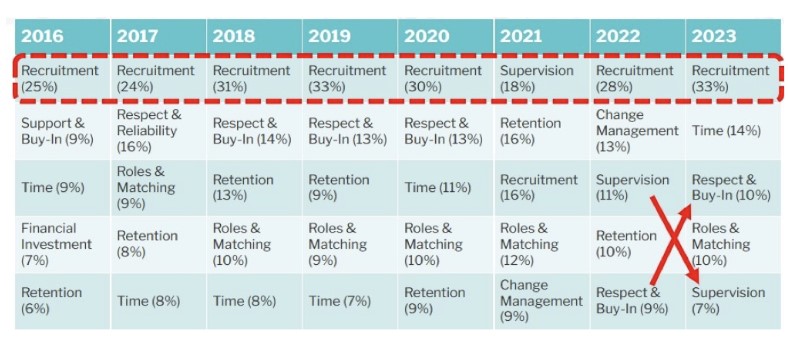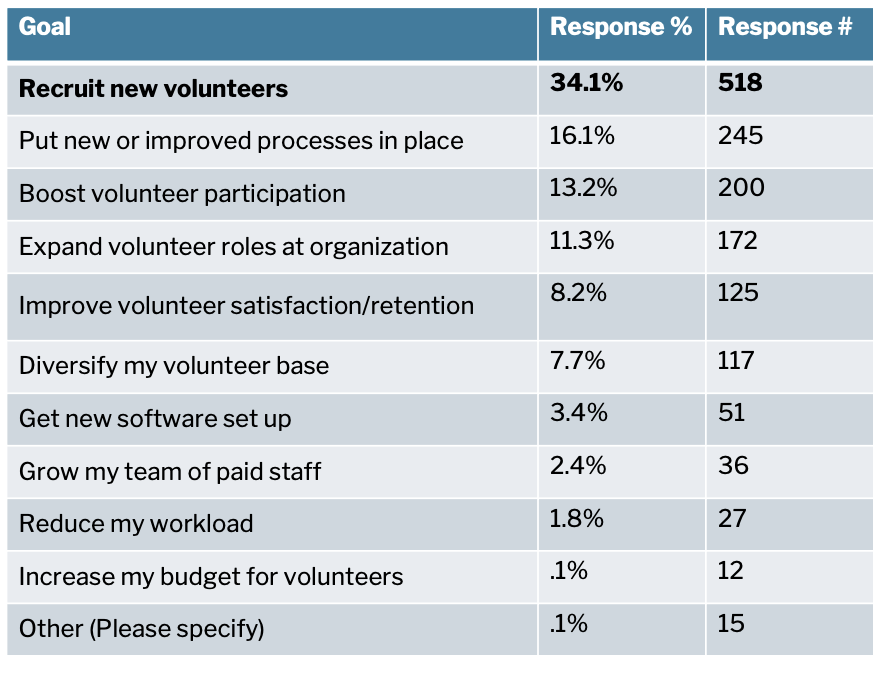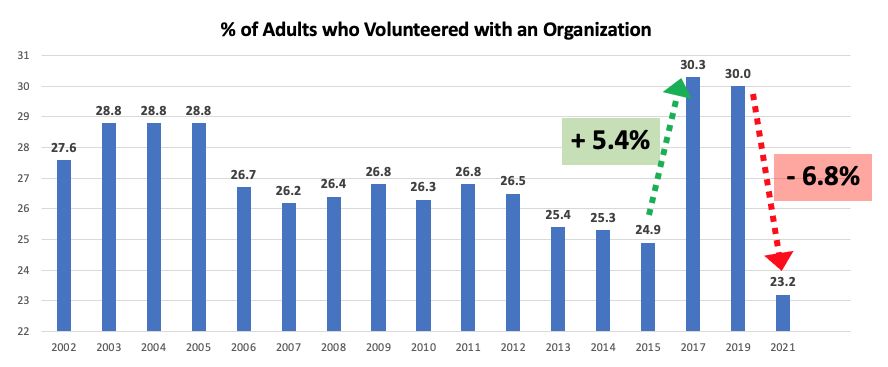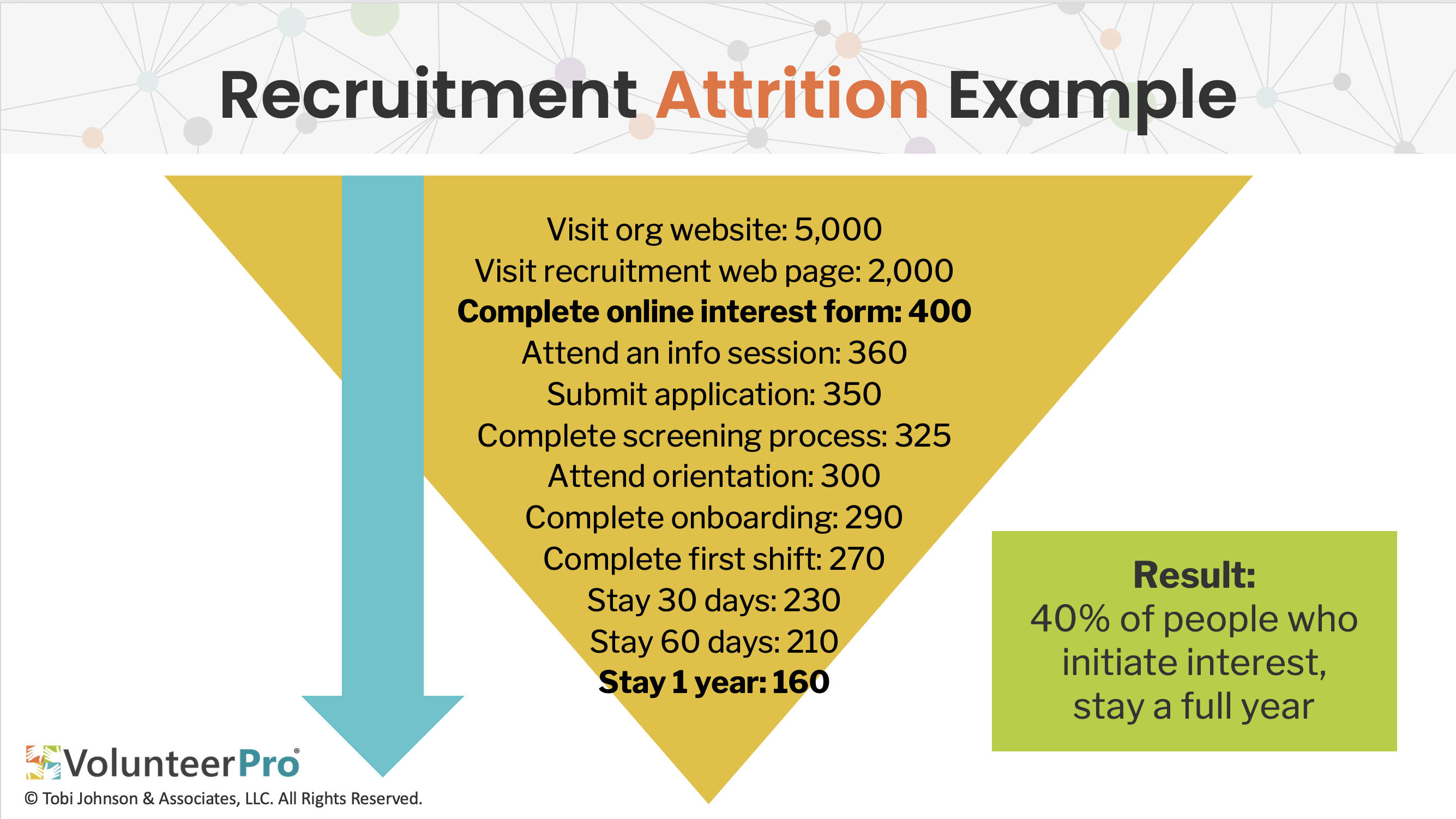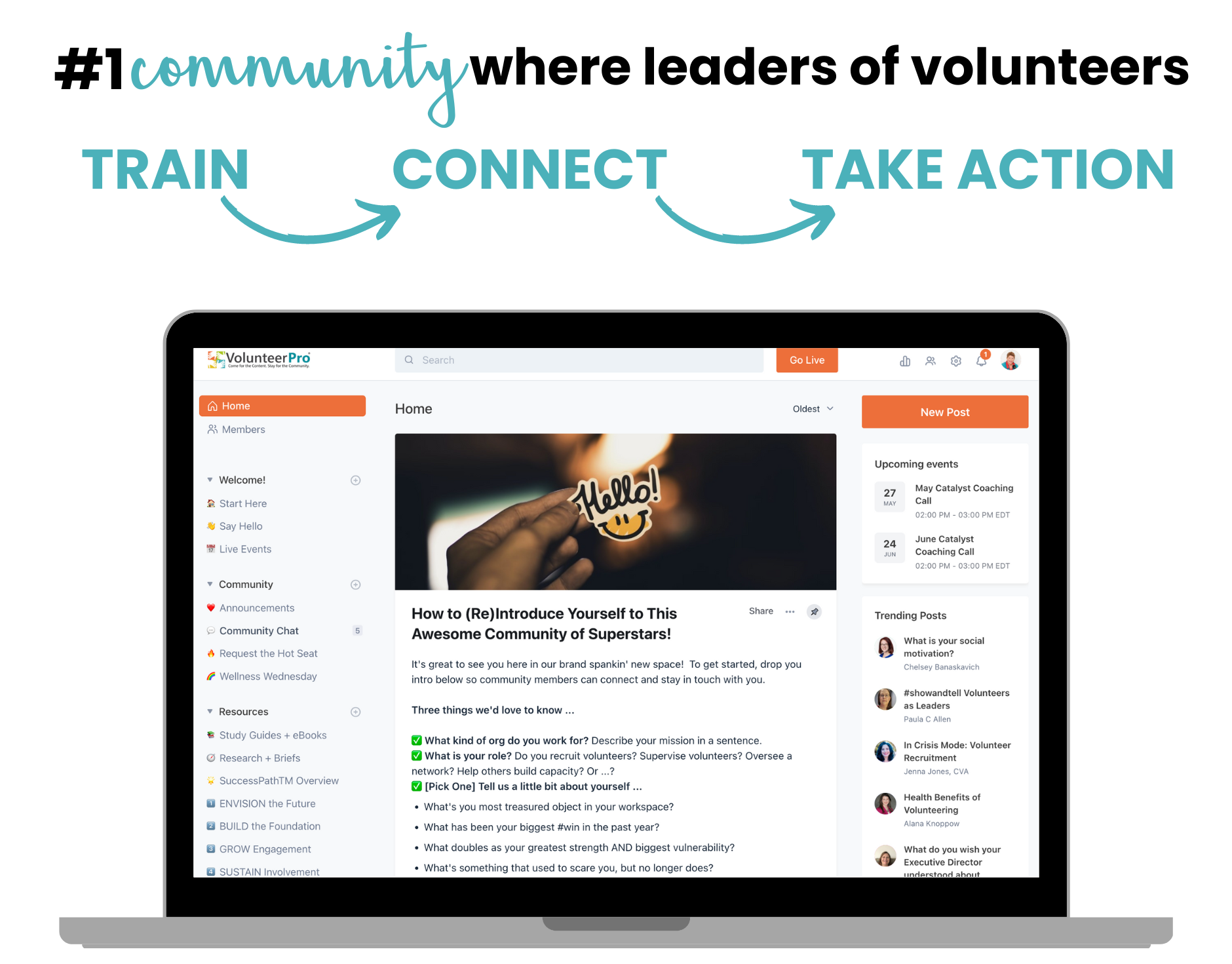Recruitment for Volunteers – What it Takes in 2023
Recruitment for volunteers is a perennial struggle for nonprofits. In our most recent Volunteer Management Progress Report survey, one-third (33%) of volunteer managers reported volunteer recruitment as their top challenge.
In the past eight years of our research, recruitment has dominated the open-ended responses to our “biggest challenge” question, save 2021 in the depths of a global pandemic. Recruitment for volunteers is also a top priority for many.
Top Challenges Reported by Leaders of Volunteers
In addition to reporting recruitment for volunteers as a top challenge, 34% reported that recruitment for volunteers was their top management goal for 2023.
Boosting volunteer participation (13%) and expanding volunteer roles (11%) came in third and fourth place behind putting new or improved processes in place (16%). Nearly one out of ten (8%) noted that improving volunteer satisfaction and retention was a key goal for the coming year.
As volunteer-driven organizations continue to build back, volunteer recruitment is not only a priority, but a mandate if organizations are to survive and thrive.
Top Management Goals Reported by Leaders of Volunteers
So, what does it take to pull off a successful volunteer recruitment strategy? Why do nonprofits continue to struggle to attract the kind of talent they need to move their missions forward? And what can they shift to get better results?
In this blog post, we break it down – what should recruitment for volunteers look like inside your organization? Read on to find out.
Volunteering Rates Take a Hit and Are Slow to Recover
At VolunteerPro, we are hearing from our students, members, and followers that building volunteer teams back after the pandemic has been slow. However, some organizations have been able to thrive, even with this setback.
Our data shows that average numbers of volunteers (101-250 volunteers) have rebounded to pre-pandemic levels. In addition, average reported hours contributed per volunteer is as high as levels at the even of the pandemic, at 10-20 hours per volunteer per month.
However, data recently released from AmeriCorps Volunteering and Civic Life in America report shows a different story.
According to census data, the rate of formal volunteering through organizations dropped by seven percentage points between 2019 and 2021 (from 30% to 23%) during the COVID-19 pandemic. While volunteering rates hovered at about one-third of all adults in the United States, after a five percent increase in volunteerism in 2017, rates have dropped to rates not seen in recent history.
The contrast between these two data sets – Volunteer Management Progress Report and Volunteering and Civic Life in America – is striking. While there has been a drastic reduction in the availability of volunteer talent in the United States, some volunteer-involving organizations appear to be bouncing back with volunteer corps that meet pre-pandemic levels.
While this may be due to the timing of the data collection (the former collected in 2021, the latter in the Fall of 2022), it begs the question – why are some organizations faring better than others when it comes to recruitment for volunteers?
Recruitment for Volunteers Takes Stronger Strategy in 2023
With an exhausted populace, pandemic epiphanies about how to spend valuable personal time, increasingly sophisticated organic search algorithms, and a noisy communications marketplace, it has become nearly impossible for nonprofits to get a word in edgewise about opportunities to support their good cause.
For more on this topic, check out Volunteer Nation Episode #042: Why Your Volunteer Recruitment Isn’t Working (And What to Do Instead) HERE >>
When we work with Volunteer Recruitment Accelerator coaching clients, we guide them through a strategic framework that moves organizations from their wish list for volunteers to a completed volunteer recruitment strategy that they are taking action on.
At the beginning of the coaching engagement, we conduct a personalized audit of our client’s current recruitment strategy and digital presence and provide a lengthy report with recommendations for change.
We find that most teams are stuck without a clear understanding of the framework for how to move forward, or the gaps in their current approach. Many continue to employ “old school” tactics like tabling, posting, and flyer distribution without a clear understanding of the infrastructure and analysis needed to make these, and other tactics, effective.
Fortunately, we have found that after working with clients for only a few sessions, the lightbulbs begin to go off and they begin to experience renewed energy, enthusiasm and hope about their ability to attract volunteers. Even the smallest of changes begin to have an impact on their results.
So, what is the secret sauce to their success? Is it that their organizations are “easy” to recruit for? We’ve found that organizations of all types – from those who recruit literacy tutors to those that recruit professionals to write certification test items to those who recruit travel companions for adults with disabilities – can get traction with adjustments in their approaches.
Need to recruit volunteers quickly to meet your organization’s rapidly growing needs? Consider private coaching through our Volunteer Recruitment Accelerator. Book Discovery Call to see if this kind of support is right for you. BOOK A CALL >>
Recruitment for Volunteers – What’s Missing for Most Nonprofits
After working with thousands of students, members, and coaching clients, we have found that most organizations not only lack an overall strategy, but they also lack the following core elements of a successful volunteer recruitment campaign.
Rather than an “any warm body” approach, organizations must begin with a clear understanding of their ideal volunteer’s needs. This will also save time and result in focused recruitment messages that resonate.
By developing a clear understanding of their ideal volunteer, organizations have a better sense of where to place their appeals for maximum impact. What’s more, they can pinpoint which messengers will be the most powerful in helping spread the word.
In today’s busy online world, with thousands of organizations vying for the attention of volunteers, nonprofits hoping to capture the attention of community members must also deploy communications that stand out. They must learn to write irresistible calls to action that inspire prospective volunteers to get off the fence and choose their organization, over others, to support.
In addition, they must choose the precise communications channels where their ideal volunteers can be found and not waste precious time trying to reach “everyone, everywhere.” In addition to selecting the channels that make sense, they must also use them in ways that are effective, not simply relying on social media, for example, because they “heard it worked for someone else.”
Further, volunteer-involving organizations must understand their pipeline for recruitment of volunteers and where they are losing prospects through the journey.
While volunteer attrition is normal, it’s vital to have a deeper understanding of pinch points for prospective volunteers and what stops them in their tracks. This helps recruitment teams pinpoint areas for improvement that can mean the difference between 10x success and total failure.
To improve these results, it helps to track micro-conversions and make targeted improvements where there is a pronounced drop-off in volunteers.
To Track Micro-Conversions
- List out the steps in your recruitment & onboarding process
- Put processes place for collecting data at each step
- Track the number of volunteers that start each step
- Count the volunteers that complete each step
Then, calculate the Micro-Conversion Rate: # who start/# who complete x 100.
By comparing conversion rates, you can begin to diagnose issues and take steps to fix them.
This requires clear onboarding steps, accurate data, and consistent tracking, reporting, and analysis of results. While it takes time to pull it all together, the intelligence gained through the process makes it worthwhile.
The insights that teams garner from the process can make the difference between continuing to waste time on a strategy that doesn’t work to pivoting to one that is predictable, offers clues as to where to intervene early to impact the results downstream, and can help recruitment for volunteers feel less overwhelming and more like a controlled process of improvement.
So, while many causes and charities struggle to attract committed, enthusiastic, and dependable volunteers to fuel their missions, your organization doesn’t need to be one of them. With a smarter volunteer strategy and the right data, you can connect with the people in your community who want to contribute their time but haven’t yet found the cause (AKA yours!) that calls to them.
Join Our Community and Learn the Secrets of Today’s Volunteer Recruitment!
VolunteerPro membership helps volunteer-driven organizations build an effective, what’s-working-now volunteer recruitment strategy with less stress and more joy. Volunteer-driven organizations can stop the guesswork – and hunting and pecking for ideas – and get to work building a recruitment campaign that gets traction.
It is the only implementation program of its kind and helps your organization build maturity across five phases of our proprietary system, the Volunteer Strategy Success PathTM, including the popular Grow Volunteer Engagement phase that walks you through all that’s needed to recruit the talent you need to succeed.
Within membership, you’ll find in-depth training on how to build an effective recruitment and retention strategy, to attract and engage supporters in your good works and keep them coming back. You’ll also have access to monthly coaching calls to ask questions and get feedback on your campaign design.
Membership includes access to a huge digital library of time-saving frameworks, tools, templates, and on-demand videos as well as live monthly seminars, workshops, and coaching calls, as well as a vibrant community of volunteer leaders to share ideas and questions.
Enrollment for new members is open NOW.


